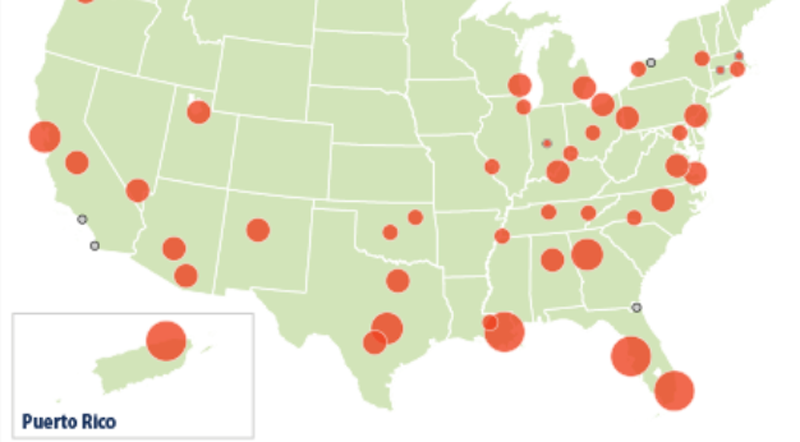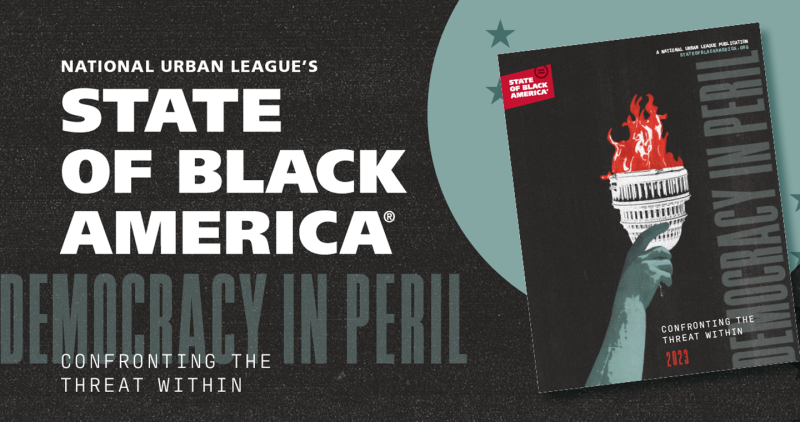Race, Lies and Social Media: How Russia Manipulated Race in America and Interfered in the 2016 Elections
Have you met Luisa Haynes? She was a prolific force in the #BlackLivesMatter community on Twitter. In just over a year, she amassed more than 50,000 followers; and her outspoken, viral takes on everything from Beyoncé to police brutality earned her hundreds of thousands of retweets and media coverage in more than two dozen prominent news outlets.
She was, on the surface, a symbol of a new generation of Black activists: young, female, and digitally savvy—except—she was fake.
In October 2018, Twitter released data associated with more than 3,000 accounts created by the Internet Research Agency (IRA) based in St. Petersburg, Russia. “Luisa Haynes,” known as @WokeLuisa, was one of many IRA-manufactured accounts that used sock puppet personas to impersonate African Americans, particularly those affiliated with the Black Lives Matter movement. It was part of a far-reaching Russian strategy to manipulate and hijack the legitimate social and political grievances of African Americans.
“Russia was able to influence our election because they figured out that racism, sexism, anti-Semitism, homophobia, and transphobia are America’s Achilles heel,” California senator and Democratic presidential candidate Kamala Harris tweeted in February. She added, “These issues aren't only civil rights – they're also a matter of national security.”
While the technology used in Russia’s widespread (and ongoing) information operations may be new, the focus on America’s moral failings—particularly regarding racial inequality—is not. And Harris’s warning that racism is a “matter of national security” is less a revelation than a reminder that America’s internal demons have long been used against it by foreign adversaries.
During the Cold War, U.S. efforts to gain ideological supremacy over the Soviet Union, particularly in the developing world, were constantly undermined by racial strife at home. As the United States attempted to extoll the virtues of liberal democracy, Soviet propagandists needed only to point to Birmingham and Little Rock as proof positive of the hypocrisy and moral bankruptcy of America, and, by extension, the system itself. There was no need for distortion or disinformation; images of Bull Connor, German shepherds, and fire hoses turned against Black protestors spoke for themselves.
But the Soviet state also used segregation and racial violence in America for its own benefit. Whenever the United States admonished the Soviet Union for civil rights abuses, the Soviets were able to deflect criticism by pointing back at America’s segregationist polices. This rhetorical tactic, commonly known as “whataboutism,” was so pervasive that the Kremlin’s oft-used rebuttal – “And you are lynching Negroes” – became a satirical witticism in the Soviet Union.
The reputational damage caused by Jim Crow injustices and racial violence was not lost on American officials. Former President Dwight Eisenhower—a man hardly known for progressive racial views—noted in his memoir that there was a fear that stilted progress on civil rights “could continue to feed the mill of Soviet propagandists who by word and picture were telling the world of the ‘racial terror’ in the United States.” Regardless of its intent, Soviet propaganda therefore had an unintended consequence—it expedited progress on civil rights reforms in the 1950s and 1960s.
Modern Russia’s exploitation of contemporary social justice struggles portends no such progress. As in the past, Russian operatives are playing on divisions of America’s own creation. But while the Soviet Union certainly attempted to exacerbate race relations in the United States through so-called “active measures” (perhaps most infamously during the 1984 Olympics, when the KGB forged threatening letters purportedly sent by the KKK to African and Asian athletes), their ability to infiltrate or impersonate genuine activist communities was limited. Today, that is no longer the case.
The anonymity and audience segmentation baked into online social networks has allowed Russia’s online provocateurs to nimbly insinuate themselves into Black activist communities, where they can, in their own words, “effectively aggravate the conflict between minorities and the rest of the population.” As social media analyst Justin Hendrix has observed, an effect of Russia’s exploitation of authentic movements is that “civil rights groups—already beleaguered by the fight against an onslaught of regressive policies of domestic politicians—must also now fight well-funded state actors who seek to use their interests as leverage in a broader campaign to destabilize the West.”
It is also important to remember that Russian trolls lurk on the other side of the debate, helping to stoke the racist, toxic vitriol directed at Black activists. Black activists are, therefore, caught in a vice grip of deception, with Russian trolls working from within and without to undermine their interests.
Kate Starbird, a researcher at the University of Washington, illustrated this point in a recent study that found that inauthentic Russian troll accounts were not only deeply embedded in authentic online Twitter conversations related to the #BlackLivesMatter and #BlueLivesMatter movements, but they were often the most polarizing voices in those debates. Motivated by social division rather than social justice, these imposter accounts worked the margins, manufacturing consensus for partisan viewpoints while simultaneously pushing their own strategic objectives. Starbird and her team noted, for example, that purported Black Lives Matter personas created by the IRA were consistently critical of Hillary Clinton and encouraged others in the community not to vote for her (or vote at all). This finding mirrors a report from the social justice watchdog group Stop Online Violence Against Women (SOVAW), which noted that IRA purchased Facebook ads targeted at Black Americans had “the explicit goal of suppressing voter turnout.” These Russian efforts intensified a point of friction within pro-#BlackLivesMatter clusters, highlighting the very real potential for manipulated conversations to prompt fragmentation within activist movements—not to mention the possibility that it depressed the Black vote.
The ability of foreign actors to look, act, and speak like the online communities they target creates the obvious potential for manipulation. At the same time, genuine activists may, in fact, be best positioned to recognize and ferret out the imposters in their midst. For example, in the aftermath of the killing of Philando Castille, an unarmed Black man shot to death by a police officer in Minnesota, Black Lives Matter activists flagged what turned out to be a Russian-operated, faux-BLM Facebook page as suspicious due to its use of the slogan “Don’t Shoot”—a phrase that many genuine activists had long since abandoned.
Those subtle inconsistencies are less likely to be noticed by those outside of Black activist circles, meaning that content seeded by IRA trolls posing as Black activists may have a more profound impact on broader public perceptions and opinions. This is especially problematic given that Russian internet trolls often engage in a form of digital blackface, painting grossly stereotypical portrayals of the African Americans whose personas and vernacular they co-opt. These caricatures are not only offensive and demeaning, they can discredit the legitimacy of the causes they claim to support. By promoting viewpoints that seek to generate polarization rather than reasoned debate, Russian trolls can skew the perception of critics and potential supporters alike, particularly when those opinions—like Luisa Haynes’—find their way into mainstream media outlets.
A less explored—yet perhaps more problematic—outcome is the potential for real or perceived foreign interference to be used to discredit authentic opinions and movements. Authentic Black activists have expressed concern, for example, that engagement with specific hashtags that have been hijacked by inauthentic accounts have led to them being incorrectly labelled “Russian bots.” This not only damages freedom of expression, it also creates a perverse incentive for bad actors—Russians or otherwise—to openly interfere with causes they seek to derail. If all one needs to discredit a movement is the mere specter of foreign “support,” it will create an all-too-easy mechanism for foreign actors to inflict further damage on our democracy.
It is, therefore, essential that we address the problem of foreign manipulation without the unintended consequence of inflicting further harm on the activists and issues they have targeted. We must also not lose sight of the fact that despite the very real threat of foreign interference, social media can be, and has been, a tool to empower historically marginalized communities and individuals. Finally, we must recognize the lessons of history and understand that, as a society, we are only vulnerable to external interference when we ourselves are divided.


 A Climate In Crisis
A Climate In Crisis

 Executive Summary
Executive Summary